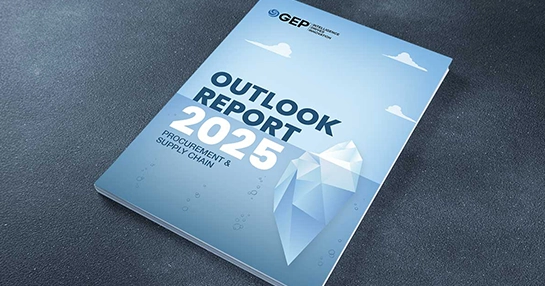
The False Dogma of the Two-System Paradigm
March 20, 2017 | Procurement Software 5 minutes read
There are a few things that procurement professionals know without hesitation:
- Savings are an unavoidable measure of our performance
- Suppliers are key contributors to sustained competitive advantage
- The system requirements of procurement technology ‘power users’ are at odds with the needs and preferences of everyone else in the organization
Well, two out of three isn’t bad.
Procurement is currently engaged in a long-running struggle to ensure that the potential represented by our negotiated contracts reaches the corporate bottom line in a measureable way. In addition, we’ve never quite reached the point where distributed buyers in the company accept procurement’s positive contributions to operational health as fact. The friction between negotiated and realized, centralized and extended has led to untold hours of procurement effort and angst focused on resolving these two points rather than facilitating end to end information flow or expanding our influence and impact.
Although there is some level of personal ownership that procurement needs to accept if we are to resolve this friction once and for all, the technology we have implemented to carry out processes throughout the enterprise has not helped. In many cases, it has served as more of a barrier than an enabler. Procurement needs one thing from their technology and casual users need another. This assumption, a false dogma, has led to a fracture in the middle of spend management efforts that need to be cohesive to function properly.
The artificial division between procurement’s needs and those of more intermittent users may have originated with the good intention of meeting each group’s needs as fully as possible. Unfortunately, it has also hampered our ability to deliver results and either obscured or diminished procurement’s true ROI. Not until we forego the false dogma that multiple systems are required to meet the end-to-end needs of the P2P process will the total potential value be unlocked and delivered.
Meeting Diverse Needs with One Platform
Rejecting the two-system paradigm does not require us to give up on the idea that the technology needs of centralized procurement are different than those of distributed users. There is some truth to this, but not enough to represent the entire picture. The problem is making the assumption that one system cannot meet both sets of user expectations.
Before we can re-think our approach to technology, we need to acknowledge an important fact about value creation: it is a multi-step process, and not all the steps occur within procurement. While procurement negotiates contracts, manages supplier relationships, and tracks results, the measurable benefits are generated outside of procurement. Without the needs of buyers and the ROI of their purchases, procurement creates nothing more than unfulfilled potential. This is the roadblock between negotiated and realized that we have struggled with for so long. There is no realization without utilization, and there is no benefit to procurement’s ability to manage complexity if we cannot immediately simplify it for others to create value with it.
Multi-Directional Visibility and Information Flows
Central to procurement’s ability to replace complexity with simplicity is what we do with information. After all, all of procurement’s activity is geared towards assembling information in a location and format that allows others in the organization to use it.
Another traditional ‘procurement truth’ that deserves a re-visit is the linear process flow associated with the P2P process. The beginning is spend analysis and the end involves Accounts Payable and there are any number of steps in between. In practice, however, the journey is made up of a series of swirls and loop backs rather than neat single step moves forward from beginning to end. If there is a systems-related break between procurement and the rest of the enterprise, these agile, unpredictable flows of data creation and information needs completely break down and require far too much human intervention to resolve.
If procurement is upstream in the flow of information, suppliers, AP, finance and distributed buyers, etc. are all downstream. Should they only be able to go back to the point of contract implementation to access information? What if suppliers and finance both need to access similar information at different times and for different reasons? If they are required to get their answers from different systems, the risk of error and inaccuracy is much higher than if one powerful but useable system is the single objective-agnostic point of truth.
Accelerating the Path of Least Resistance
If there were one, unassailable reason for procurement to work in a different system than is used by everyone else, it would be that we already have so much trouble with compliance we can hardly expect users to learn to work in a system as complex as the one procurement uses.
On the contrary, this is a justification for having one cohesive system rather than an effective objection against it. If, by putting a system in place specifically for intermittent purchasers, we were able to make their job so easy that they had no reason to go maverick, we wouldn’t have compliance problems today. The fact that we do is evidence that our understanding of the technology needs and standards of distributed users are different than we think.
The shortest automated path to value should be the same as an end user’s path of least resistance. We have a better chance of success – whether measured in direct procurement ROI or minimized non-compliance – by closely tying the buying experience to corporate strategy. Perhaps users are less concerned with the simplicity of the user interface and are more focused on what they are able to accomplish through it. The importance of user experience aside, if it continues be to be difficult or impossible to get a global view, there is little incentive to follow the official processes. The high cost of an unnecessarily simplistic UI is paid through disparate systems and isolated processes.
Although procurement and our end-users have different top level priorities (procurement is savings-driven and buyers are needs-driven) we all want the technology that we use to quickly help us find the information we need so that we can go on our way. The guiding requirement for any technology implemented by procurement should be unification.
- Does the system bring together centralized procurement, distributed buyers, supplier, and supporting functions such as AP and finance?
- Is it possible for information and transactions to move back and forth, upstream and downstream within the same system?
- Is global visibility enhanced for every user of the system?
- Does the system create a clear road to value by automating the path of least resistance?



